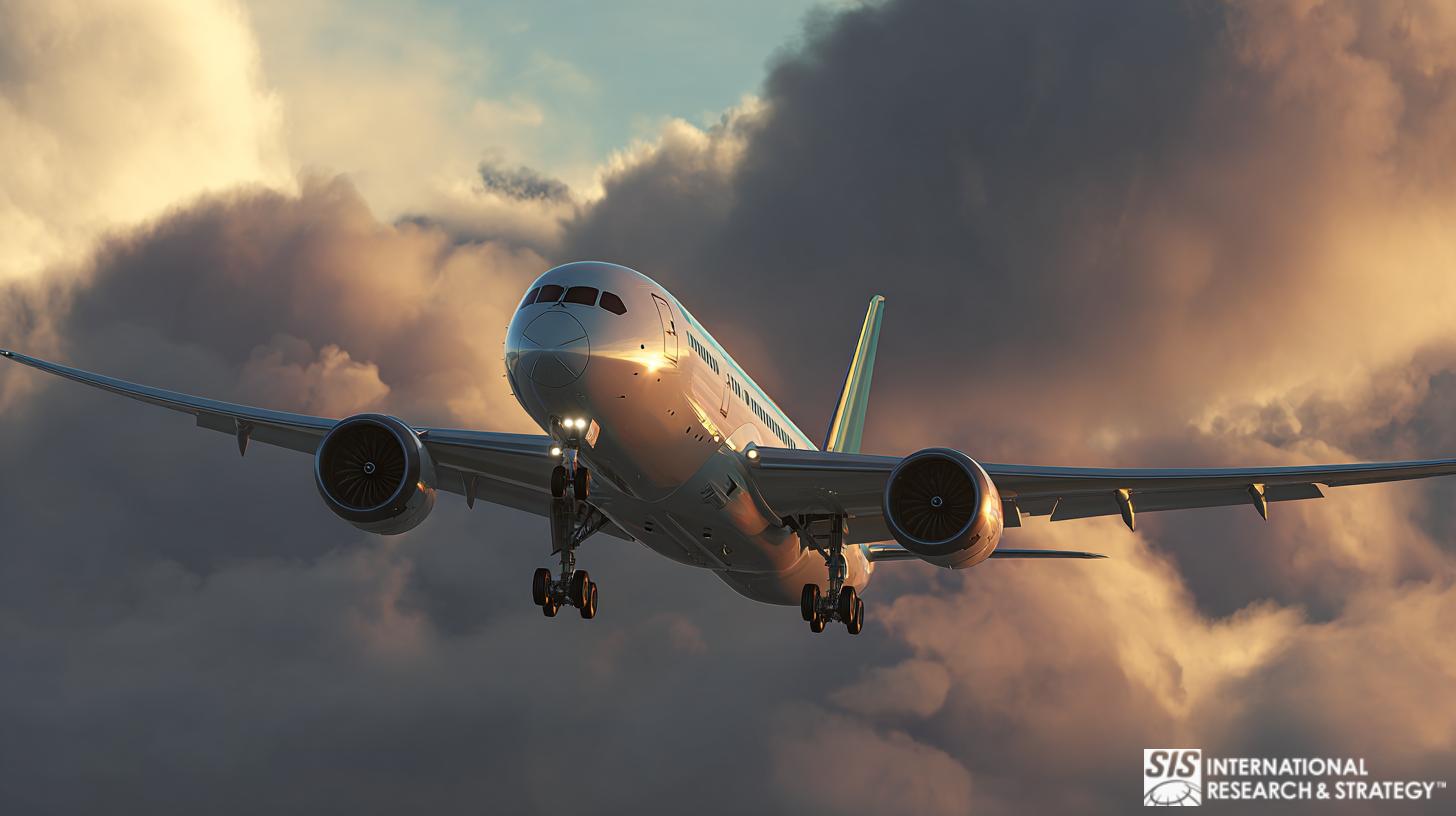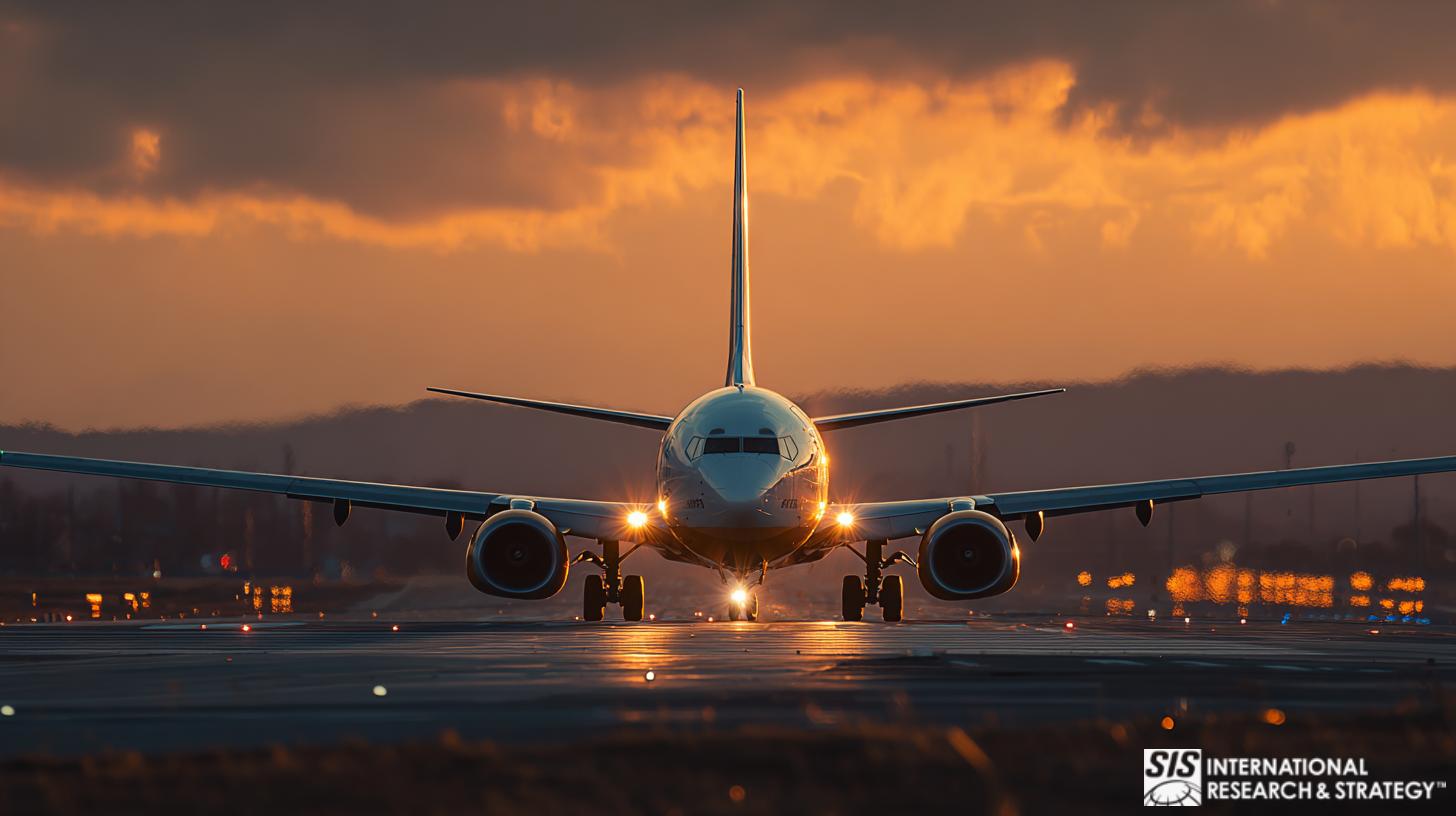
The aeronautics industry is a main contributor to national security, commerce, and transportation. It is considered as a technology driver that leads to spin-offs of advanced technology products and comprised of three major sectors: airframe, engine, and equipment.
The market is composed of civil aeronautics of aircraft used for domestic commerce and civilian air transport, and military aeronautics includes air arms for the military aviation of countries.
Mercato aerospaziale degli Stati Uniti
Since World War II, U.S. aircraft, engines, and parts have dominated the domestic and foreign markets for subsonic transports, general aviation, commuter, and military aircraft. US technology and products are also the drivers for the development of global transportation infrastructure like airports and air traffic management systems.
Attualmente, l’industria aeronautica è il maggior contribuente industriale positivo alla bilancia commerciale degli Stati Uniti, svolge un ruolo fondamentale nel mantenere la sicurezza e la comodità dei viaggi aerei in tutto il mondo e fornisce importanti contributi alla difesa degli interessi statunitensi, avendo volato il maggior numero di voli parti isolate del mondo.

La compagnia Boeing
The Boeing Company is one of the largest manufacturers of commercial jetliners and military aircraft. It designs and manufactures rotorcraft, electronic and defense systems, missiles, satellites, launch vehicles, and advanced information and communication systems, and operates Space Shuttle and International Space Station for NASA, and provides military and commercial airline support services. It operates in more than 90 countries around the world and is one of the largest U.S. exporters in terms of sales.
Boeing is headquartered in Chicago and employs more than 160,000 people across the United States and in 70 countries. Currently, it is expanding product lines and services developing more commercial airplanes, military platforms, defense systems, and the war fighter through network-centric operations; creating advanced technology solutions that reach across business units; e-enabling airplanes and providing connectivity on moving platforms; and arranging financing solutions for our customers.
Il mercato aerospaziale europeo
The region is presently struggling to keep pace with the strong increase in mobility and demand. However, the region is the main competitor of the US in terms of air travel over medium and long-haul routes. EU states are now increasing their funding to support and fund research initiatives to meet market demands and grab potential opportunities in the industry.
Airbus S.A.S
Airbus è un produttore leader di aeromobili che fornisce linee di prodotti come l'aereo di linea A318 a corridoio singolo da 100 posti all'A380 da 525 posti, il più grande aereo di linea civile in servizio.
Airbus si è espansa nel settore degli aerei da trasporto militare con l'aereo da trasporto militare multiruolo A400M, prodotto sotto la gestione della società Airbus Military, in sostituzione delle flotte obsolete di C-130 Hercules e C-160 Transall a partire dal 2009. Inoltre, le navi cisterna per aerei -Le missioni di rifornimento e trasporto in volo sono disponibili nelle varianti di aeromobili derivate dall'A310 e dall'A330.
Tecnologie emergenti
Le recenti aree di interesse della ricerca nel campo dell'aeronautica includono la nanotecnologia, i test e la valutazione dello sviluppo, la guerra incentrata sulla rete, i sistemi intelligenti e il trasporto aereo ambientale.
Sistemi di aeromobili e apparecchiature ottimizzati dal punto di vista energetico
Air craft technologies are related to the design and integration of energy-consuming Aircraft Equipment Systems (AES). These systems are located under the floor, inside wings, and behind panels, essentially ensuring performance, safety, and controllability.
Le nuove configurazioni degli aeromobili migliorano i componenti disponibili e l’integrazione di questi sistemi per introdurre possibilità di maggiore efficienza in termini di:
- Controllo ambientale e tutti gli aspetti della gestione termica
- Attuazione del controllo di volo, protezione da ghiaccio e pioggia
- Carrello di atterraggio e frenatura
- Electrical, hydraulic, and pneumatic generation and distribution
- Generazione di energia ausiliaria e di emergenza
- Sistema di alimentazione dell'aereo
- Supporto motore
- Illuminazione, cabina e acqua/rifiuti
Nanotecnologia
Le aree di ricerca attive nel settore aeronautico comprendono nanodispositivi e sistemi, nanoelettronica, nanoproduzione, nanomateriali, nanosensori e gli aspetti ambientali, sanitari e di sicurezza della nanotecnologia. Le attuali attività di ricerca includono la capacità di combinare più discipline “nano” per creare nuove applicazioni sinergiche delle nanotecnologie.
La National Nanotechnology Initiative degli Stati Uniti come campo in cui la nanotecnologia ha il potenziale per consentire una vasta gamma di innovazioni, in particolare nei materiali/strutture e nei bio-nanomateriali intelligenti nel settore aeronautico.
Trasporto aereo ambientale
L’iniziativa tecnologica congiunta Clean Sky riunirà le parti interessate europee di ricerca e sviluppo per lo sviluppo di progettazione, motori e sistemi di veicoli aerei ecologici per ridurre al minimo l’impatto ambientale dei futuri sistemi di trasporto aereo.
Technologies will directly aim for the reduction of the amount of carbon dioxide (CO2) emitted by air transport, cutting specific emissions of nitrogen oxides (NOx) by 80% and decreasing noise levels. The targets reflect the Ultra Green High Level Target Concepts developed by the Advisory Council for Aeronautical Research in Europe (ACARE). Other focus areas include the reduction of soot, water vapour, and particulate emissions through alternative fuels; aircraft engine configurations, intelligent low-weight structures, improved aerodynamic efficiency, airport operations, and air traffic management as well as manufacturing and recycling processes.
Il mercato aerospaziale asiatico
Relative to Europe and the Americas, Asia’s security situation is increasingly fluid. Emerging superpowers, weapons proliferation and nuclear tensions are key movements in the defense industry.
Increased nuclearization among Emerging Markets, particularly China, India, Pakistan, and Iran, has created geopolitical tensions and new demands for defense offerings. Meanwhile, political calls are growing in developed nations for collaborative efforts toward reduced nuclearization.
Conversely, weapons imports have grown dramatically in Southeast Asia over the past few years. Malaysia, Singapore and Indonesia are leading the growth with triple and double-digit growth in weapons imports.
In addition, defense budgets in Asia are on the rise. The rise is being led by regional tensions and a desire for more sophisticated technologies. Recently China has publicly announced its advanced capabilities to destroy ballistic missiles and demonstrated its defense capabilities in space.
Analysts expect increased demand from Asian governments. Asian companies may continue collaboration with established defense companies primarily in developed nations for cutting-edge weapons development.
Western aerospace and defense giants have emphasized their offerings of unmanned systems, aircraft, energy systems and cyber technology to, what industry giants consider one of their most important markets. While leadership in the defense industry is led by developed nations, industry observers are increasingly curious when Asia will be able to take a greater role in developing weaponry on a larger, more self-sufficient scale.
Problemi di settore
Sicurezza e qualità della vita
September 11, 2001 has shown the vulnerability of the air transportation system and the need for improved security. The long-term trend of growing numbers of commercial air operations demands a further reduction in the currently low rate of air transport accidents. Aviation safety and security pose numerous challenges to security personnel, operators, and aircraft designers. The public and aircrews must be protected both in the air and on the ground from danger and injury.
Forza lavoro
A serious problem facing the U.S. aeronautics industry is attracting, educating, and retaining the next generation of aeronautical engineers. The aerospace workforce is aging, and a significant number of people are nearing retirement.
L’età media degli addetti alla produzione è di 44 anni nel settore commerciale, 53 nella difesa e 51 alla NASA. Inoltre, la percentuale di lavoratori di età pari o inferiore a 30 anni è scesa di quasi due terzi, dal 18% nel 1987 al 6,4% nel 1999. Vi è una crescente preoccupazione che l’attuale numero di studenti nel “pipeline” educativo non sia sufficiente per soddisfare le future esigenze dell’industria aeronautica.

